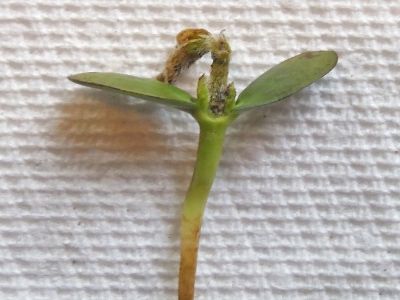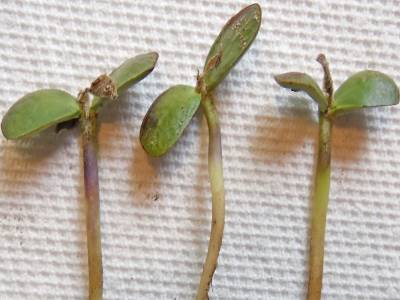By Michael Staton
The near record-breaking low-temperature events occurring on May 9 and 11, 2020, injured emerged soybeans. Within a given field there may be a range of damage. Only the unifoliate leaves may be injured on some plants and on others the cotyledons and the hypocotyl may be severely injured. The challenge for producers will be to accurately assess the injury and determine the number of viable plants remaining.
Under normal conditions, waiting five days to a week is recommended to assess low temperature damage. Due to the cooler than normal temperatures, I recommend extending this window by three to five days this spring. When inspecting the plants, look for signs of new growth. The new growth, if any, will occur at the main growing point or the axillary buds located at the base of the cotyledons. The plant in Photo 1 is alive as evidenced by the new growth emerging from both the main growing point and the axillary buds. The plant in Photo 2 is also viable even though the main growing point appears to be dead, the axillary buds are producing new growth.

Soybean seedling showing no new growth from the main growing point but exhibiting new growth from the axillary buds.
If no new growth is seen after 10 to 12 days, the plants are most likely not viable and should be considered dead (Photo 3). Use this information to assess the stand of viable plants in the field and remember that thin soybean stands can produce surprisingly high yields before making any replanting decisions.

Soybean seedlings showing no new growth and are unlikely to recover.
Source : msu.edu